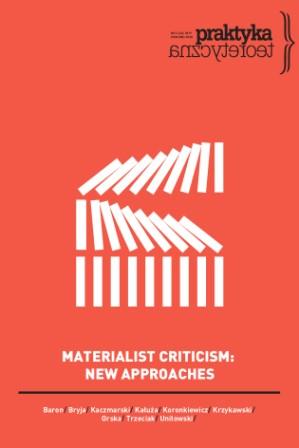The Materiality of Poiesis
The Materiality of Poiesis
Author(s): Joanna OrskaSubject(s): Semiotics / Semiology, Aesthetics, Contemporary Philosophy, Structuralism and Post-Structuralism, Psychoanalysis, Theory of Literature
Published by: Uniwersytet Adama Mickiewicza
Keywords: materialism; poiesis; avant-garde art; philosophy and art; Deleuze and Guattari; percepts; affects; performativity;
Summary/Abstract: This article attempts to explain the reason behind a secondary division within the Spinozian immanence principle - a principle that occurs, or is construed, within what could be seen (after Deleuze) as the level of practice, and that remains crucial to the so-called posthumanist turn. Posthumanism seems to ascribe an important role to claims and theses that are oriented towards the abolishment of all dichotomies that rupture the existing substance (dichotomies such as form- -matter, but also internal-external, subject-object, soul-body, reflection-truth/experience). Interestingly, embracing such a performative perspective - one in which philosophy or theory is something that is „performed” - is only possible when the division between the „immanence of practice” and the „poststructuralist” ideas of literariness or textuality is maintained and emphasised. The reason for this is that the latter has been strongly associated with the centrality of the human being, their language and their intellectual creations (see e.g. Braidotti, Barad). But, as I would like to point out, referring to Deleuze and Guattari themselves, this allegedly poststructuralist framework has been successfully transcended by poststructuralists themselves. Nonetheless, this did not lead them to exclude the art of language - including literature which, seen here as a type of social practice, was among the chief interests of these French philosophers.
Journal: Praktyka teoretyczna
- Issue Year: 2019
- Issue No: 34
- Page Range: 51-72
- Page Count: 22
- Language: English

